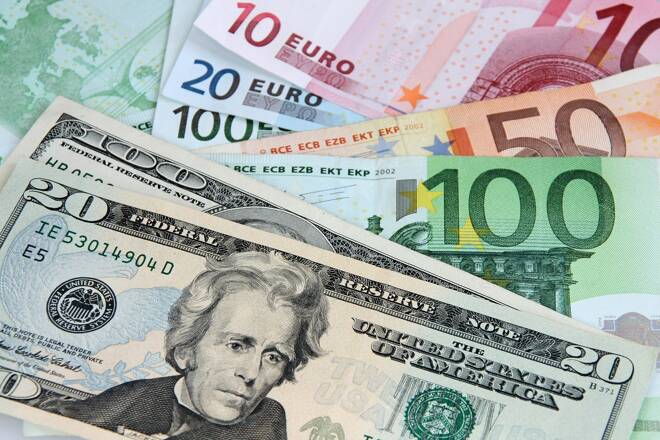Advertisement
Advertisement
EUR/USD Forecast: Manufacturing PMIs and Fed Chair Powell in the Spotlight
By:
In the spotlight: Eurozone and US manufacturing PMIs, pivotal for EUR/USD. We delve into how these indicators may sway the currency pair and impact the rate trajectory.
Highlights
- The EUR/USD fell by 0.77% on Thursday, ending the session at $1.08851.
- Economic indicators from France and Germany and Eurozone inflation numbers left the EUR/USD in negative territory.
- On Friday, euro area and US manufacturing PMIs and Fed Chair Powell are focal points.
Thursday Overview
The EUR/USD fell by 0.77% on Thursday. Following a 0.21% loss on Wednesday, the EUR/USD ended the day at $1.08851. The EUR/USD rose to a high of $1.09839 before falling to a low of $1.08792.
Euro Area Manufacturing Sector in Focus
On Friday, manufacturing PMI numbers for Italy and finalized PMIs for France, Germany, and the Eurozone will draw investor interest. Revisions to preliminary numbers for the Eurozone will likely influence the EUR/USD more.
The manufacturing sector contributes less than 30% to the euro area economy. However, weaker numbers would signal a weak demand outlook. A weak demand outlook could fuel recessionary fears. Beyond the headline number, the prices and employment subcomponents also need consideration.
According to preliminary numbers, the Eurozone Manufacturing PMI increased from 43.1 to 43.8 in November. Softer price pressures and weaker labor market conditions would support a less hawkish ECB interest rate trajectory.
US Manufacturing Sector and Fed Chair Powell in the Spotlight
On Friday, investors will focus on the US manufacturing sector. The ISM Manufacturing PMI will garner investor interest, being the more influential of the two surveys. An unexpected fall in the PMI could support bets on an H1 2024 Fed rate cut.
The US manufacturing sector contributes less than 30% to the US economy. However, cracks in the economy could draw the interest of the Fed. Beyond the headline figure, investors must consider the prices and employment subcomponents. The markets are looking for early signs of a hard landing.
While the PMI will draw interest, Fed Chair Powell will be the focal point. The Fed Chair will deliver a speech after the numbers. Support for an H1 2024 Fed rate cut could drive buyer demand for the EUR/USD. However, tight labor market conditions remain a bugbear for the Fed. The Fed Chair has caught the markets by surprise during previous speeches.
Short-Term Forecast:
After the Eurozone and US inflation numbers, near-term trends hinge on Fed Chair Powell. Forward guidance on interest rates will dictate the EUR/USD trends before the US Jobs Report. US wage growth remains a focal point for the Fed. The US Jobs Report could allow the Fed to pivot from a hawkish rate path.
EUR/USD Price Action
Daily Chart
The EUR/USD remained above the 50-day and 200-day EMAs, sending bullish price signals.
A EUR/USD break above the $1.09294 resistance level would support a move toward the $1.10720 resistance level.
US and Eurozone manufacturing PMI numbers and central bank speakers are focal points.
However, a EUR/USD drop below the $1.08500 handle would bring the $1.07838 support level into view.
The 14-period Daily RSI, 59.25, indicates a EUR/USD move to $1.10 before entering overbought territory.
4-Hour Chart
The EUR/USD sat below the 50-day EMA while holding above the 200-day EMA, sending bearish near-term but bullish longer-term price signals.
A EUR/USD break above the 50-day EMA and the $1.09294 resistance level would bring the $1.10 handle into play. Selling pressure could intensify at $1.09220. The 50-day EMA is confluent with the $1.09294 resistance level.
However, a EUR/USD drop below the $1.08500 handle would bring the 200-day EMA and the $1.07838 support level into view.
The 14-period RSI on the 4-hour chart, 40.38, indicates a EUR/USD fall to $1.08500 entering oversold territory.
About the Author
Bob Masonauthor
With over 28 years of experience in the financial industry, Bob has worked with various global rating agencies and multinational banks. Currently he is covering currencies, commodities, alternative asset classes and global equities, focusing mostly on European and Asian markets.
Advertisement
